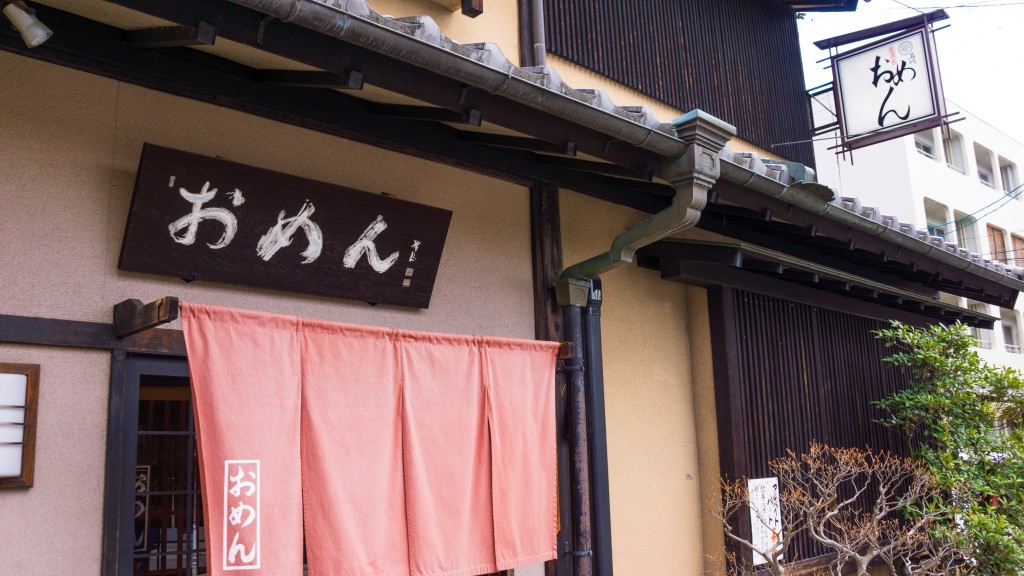
Omen Udon Noodle Restaurant in Kyoto, ‘men’ means noodle and the ‘o’ is an honorific – must be good!
Japan is famous for it’s noodles, from soba (buckwheat) to ramen (chinese-style), but my absolute favorite is udon (wheat) noodles. Plump and chewy, when made fresh they absolutely can’t be beat for texture and flavor.
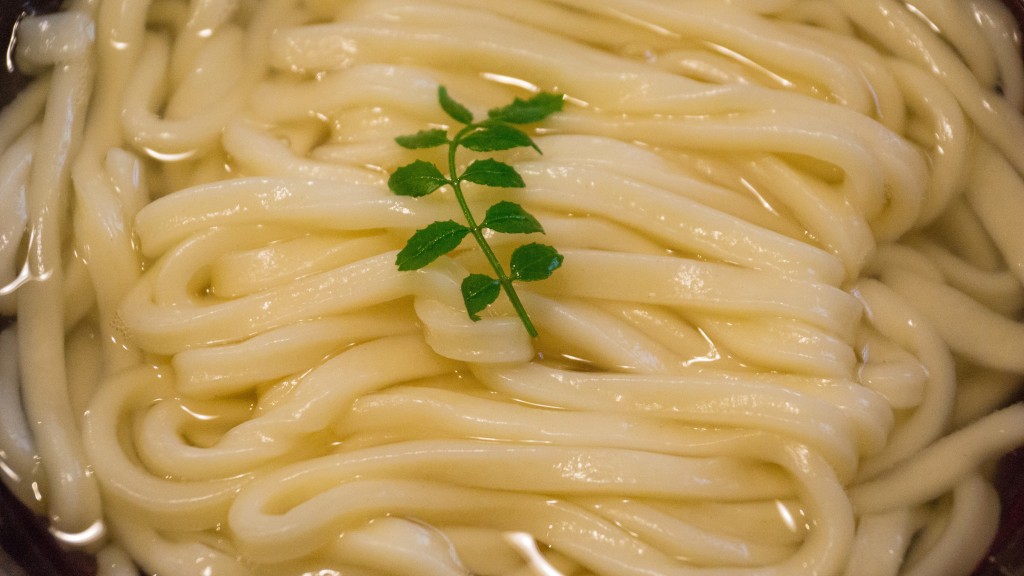
freshly made udon (wheat) noodles at Omen
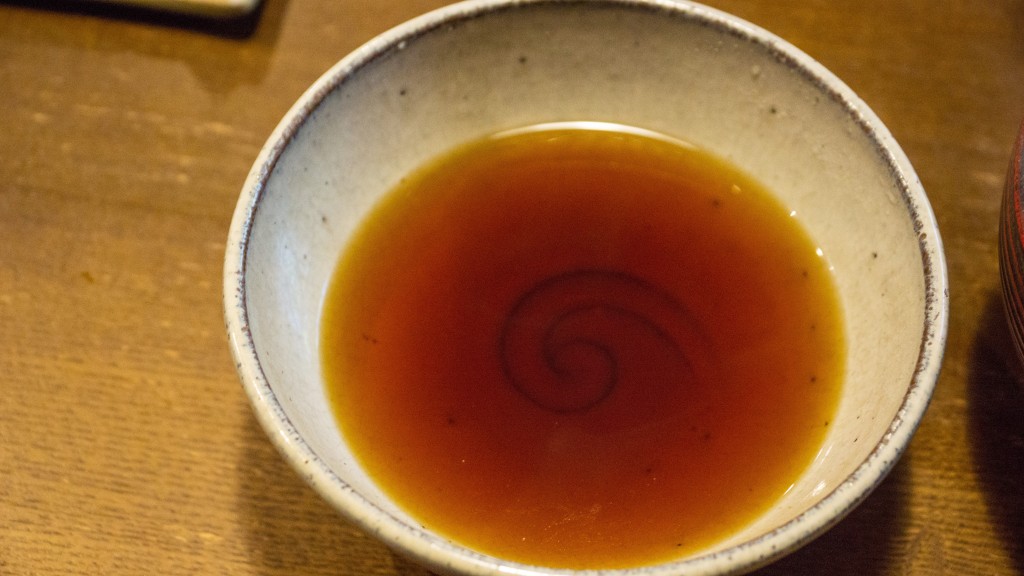
Omen vegetarian dipping sauce, made from fish-free stock
Luckily, I have found for you the best udon noodles in Kyoto at Omen. However, in going to a mainstream Japanese restaurant I was prepared for the inevitable explanation of why I wanted to avoid fish in the dipping sauce and would need to substitute pure soy sauce instead. I was met with quizzical looks at Omen and thought ‘uh-oh’ when the server informed me they have vegetarian stock! Out of all the noodle shops we tried in Kyoto, not only was this the best, but the very first to say they have vegetarian (fish-free) dashi stock in their dipping sauce on the menu.
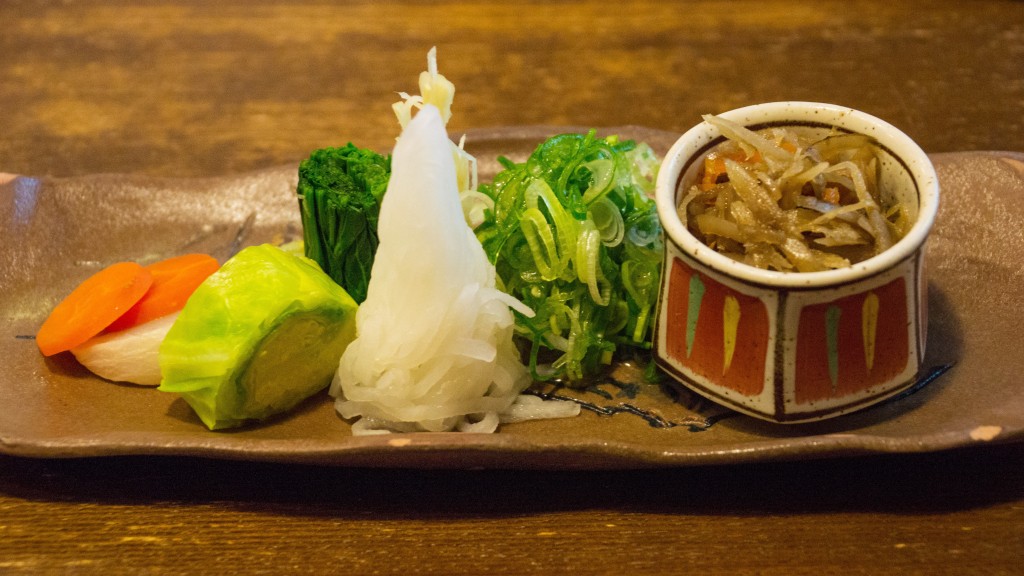
Fresh & local Kyoto vegetables including daikon, cabbage, carrot, scallion, burdock, and greens
We opted for the Udon vegetarian meal set which included local vegetables that were amazingly fresh, a generous bowl of freshly toasted sesame seeds (goma), and the vegetarian dipping sauce. They also offer ‘okawari’ (second helping) on noodles for an additional cost.
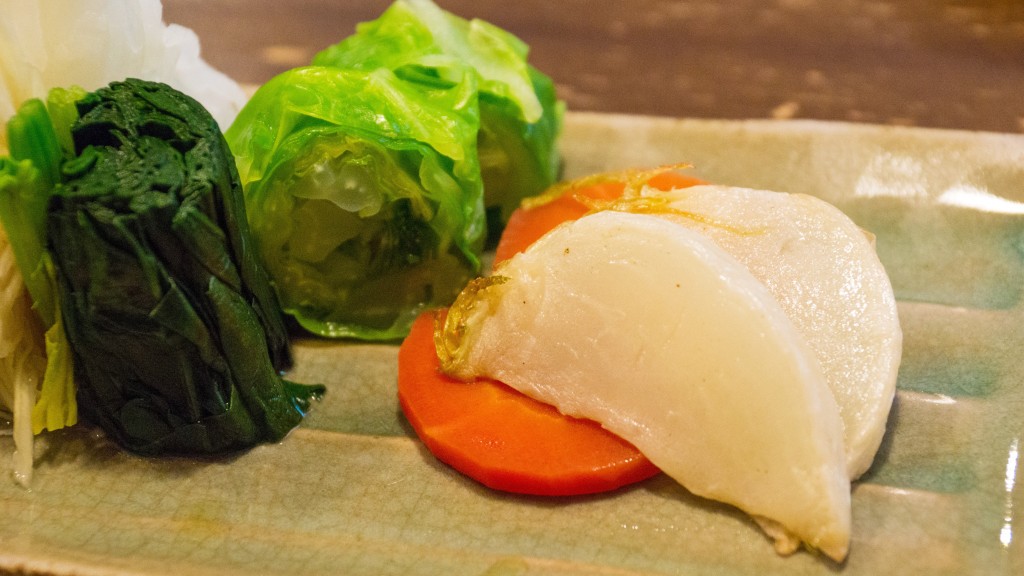
Noodle dish sides, Kyoto yasai (vegetables)
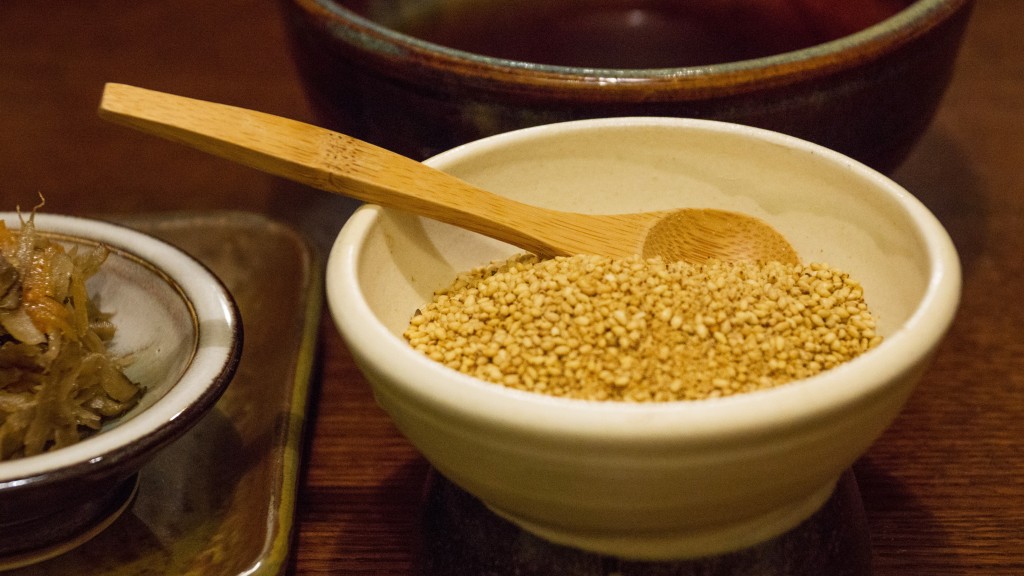
Generous bowl of toasted sesame seeds

homemade udon (wheat noodles)
If you’re only in Kyoto for a short time, eat at their original restaurant in the Higashiyama district, it’s steps from some of the best shopping and temples in the city, including the Philosopher’s Path. We ate upstairs where there is western-style seating, downstairs is traditional floor seating. They also sell their homemade udon noodles dried for you to cook at home, an awesome souvenir!
They have another location on Shijo street near Pontocho which we also tried, it was exceptional with a more modern interior.
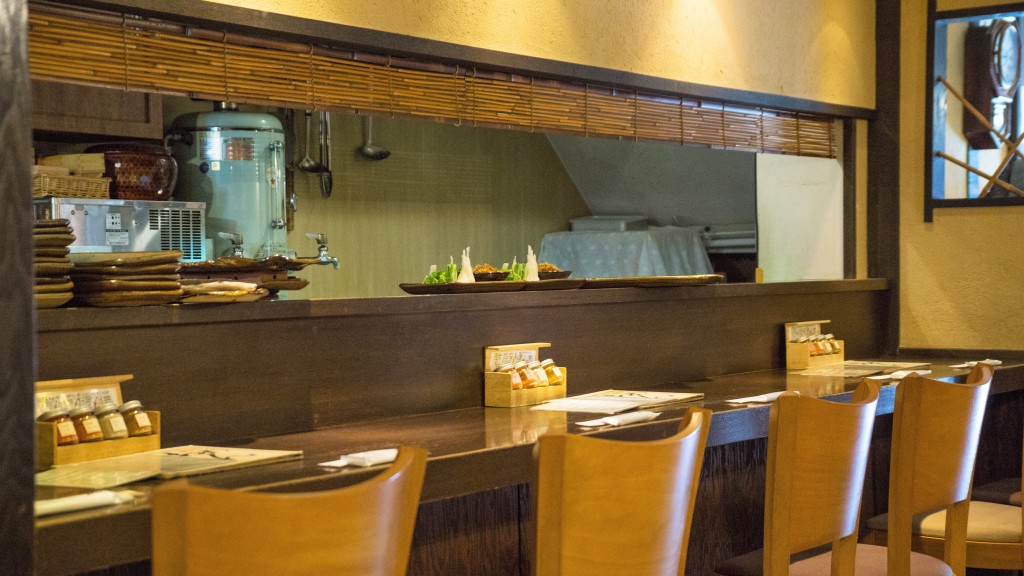
Shijo Pontocho location of Omen Restaurant in Kyoto, Japan
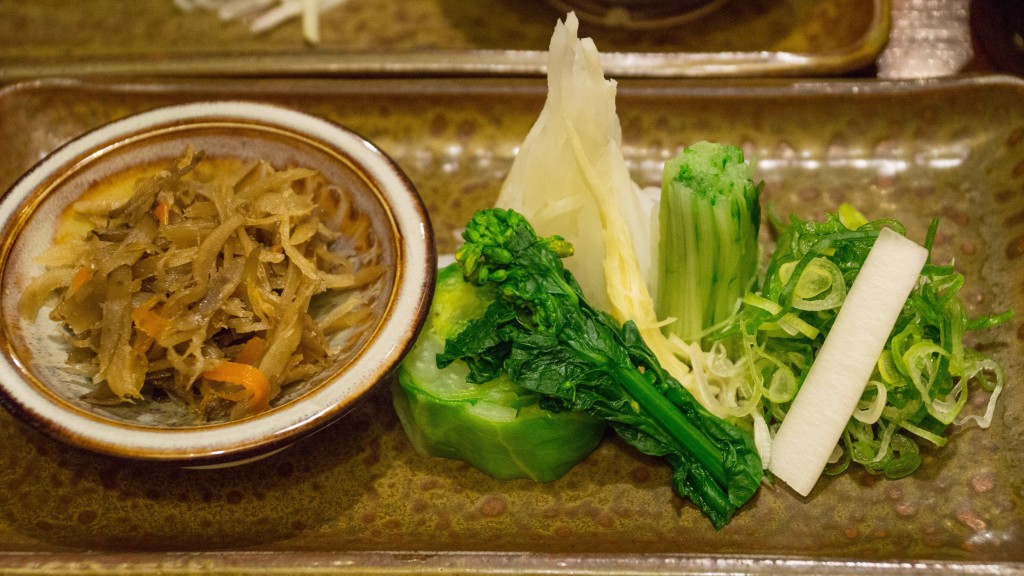
Our second udon meal at their Shijo location, Kyoto vegetables sides including nanohana (similar to rapini)
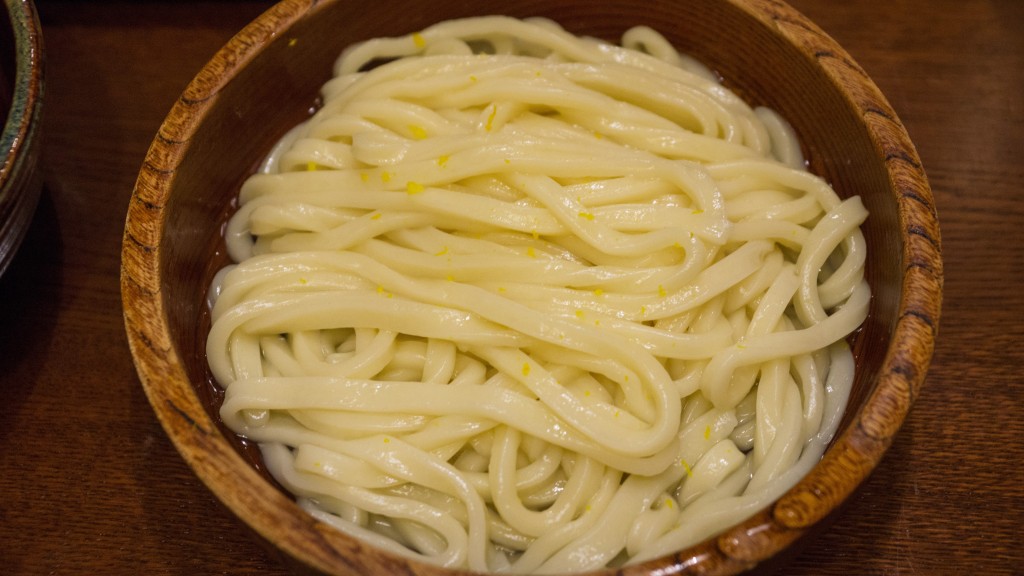
Second udon meal at the Shijo location, yuzu citrus peel is lightly grated over fresh udon (wheat) noodles
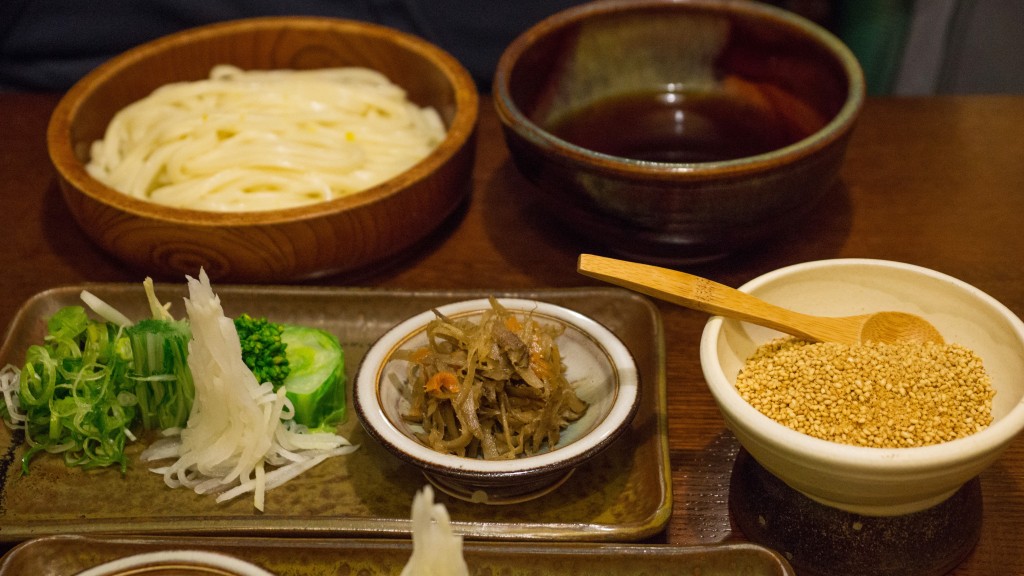
Full traditional udon meal, completely vegan!
After an early lunch, we were fueled up to visit my favorite part of Kyoto, the Higashiyama district, named for the eastern mountains it’s nestled under. First is the most famous site in the district, the Ginkaku-ji (Silver Temple Pavilion) at the top of the Tetsugaku no michi (Philosopher’s Path).
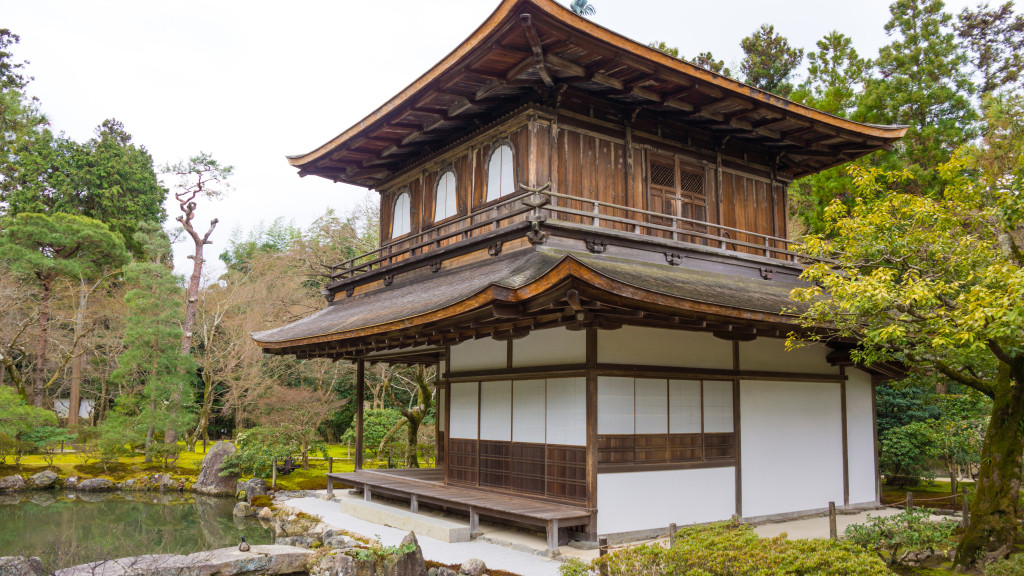
Ginkaku-ji (Silver Temple Pavilion) in the Higashiyama district of Kyoto
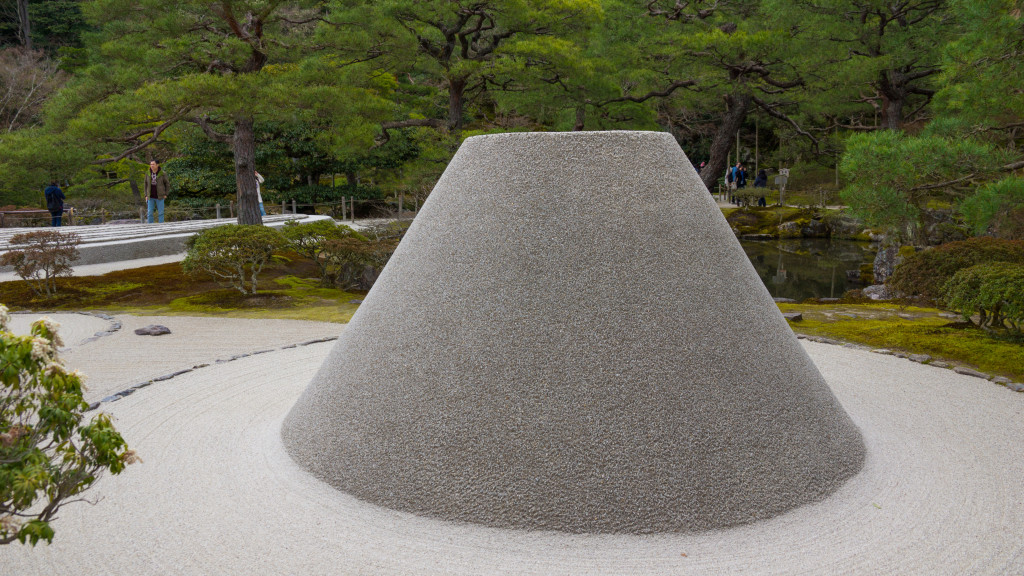
white sand mound said to represent Mount Fuji
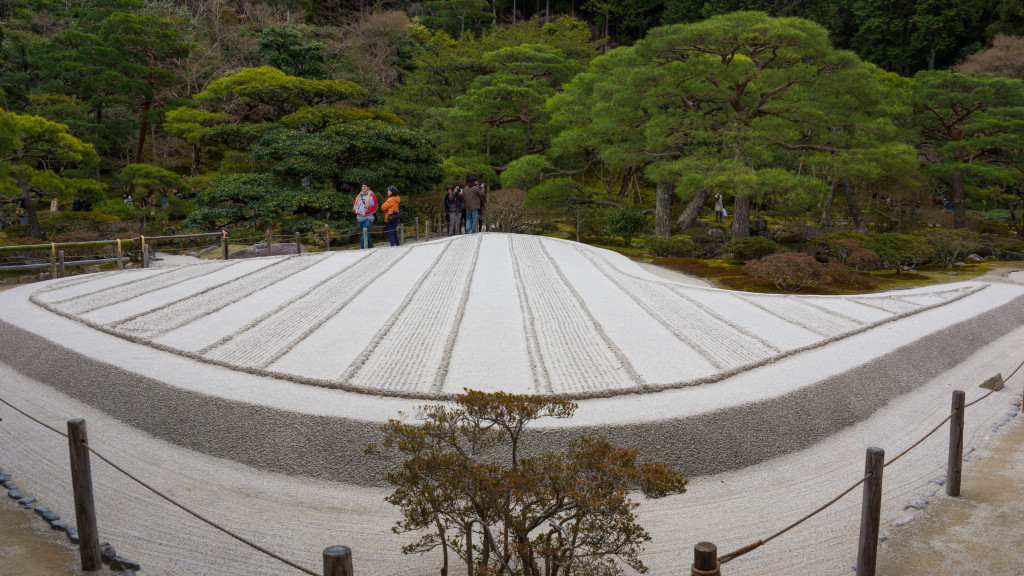
unique dry sand garden at Ginkaku-ji
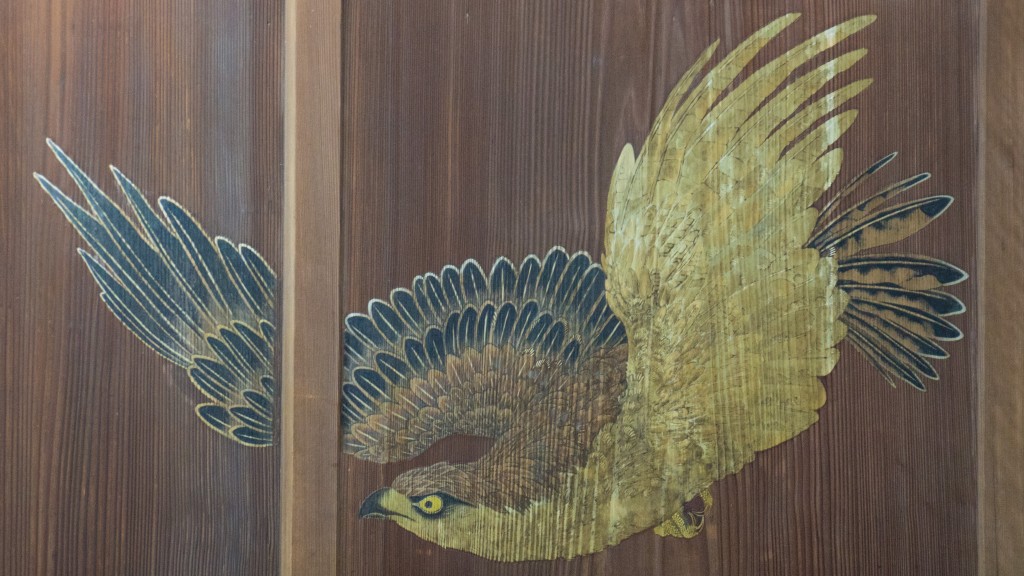
Hondo (main hall) with hawk painting on the sliding doors (fusuma)
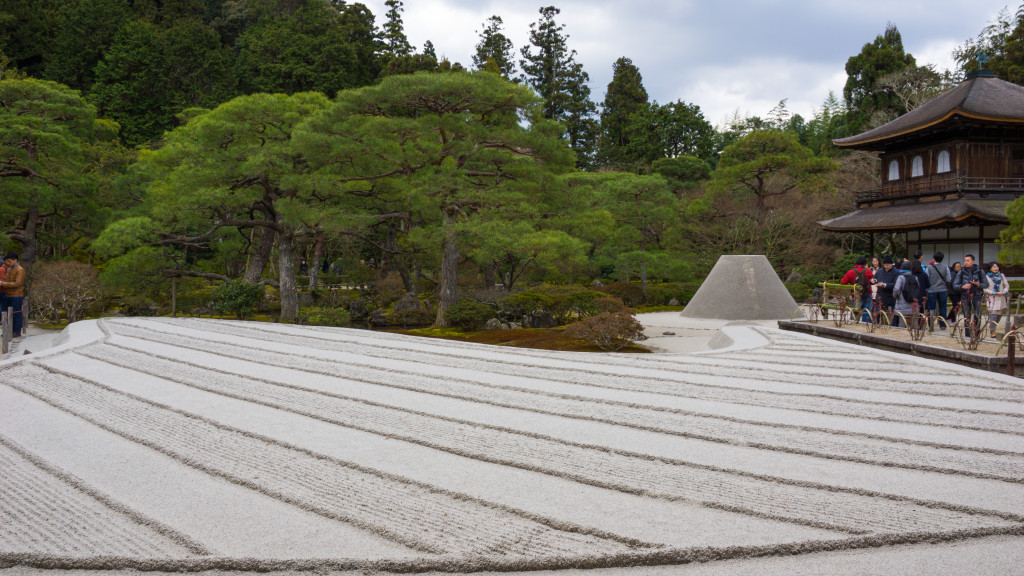
dry sand garden with Mt. Fuji mound
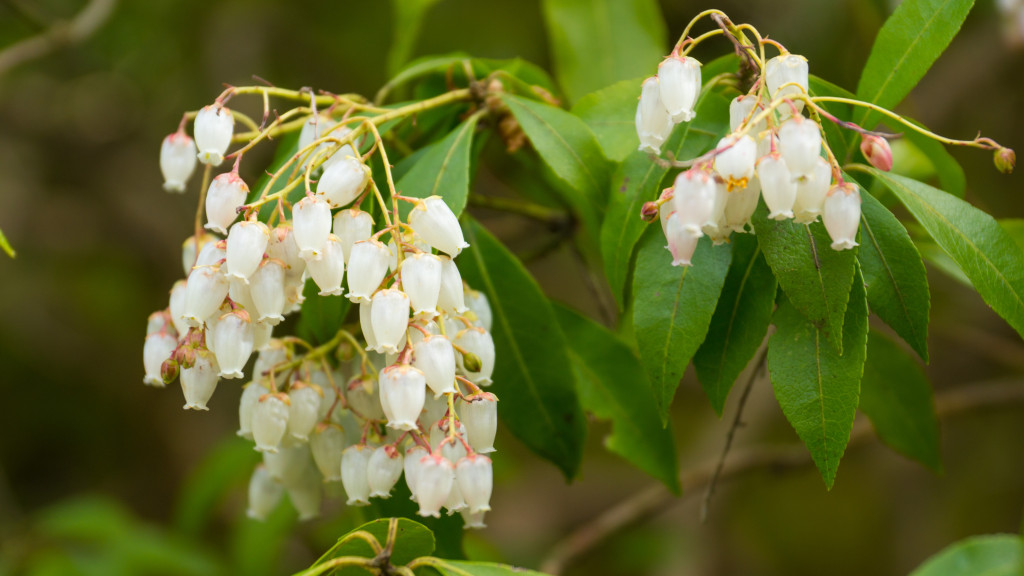
Ginkakuji, unlike it’s Golden sister Kinkakuji, doesn’t actually have any silver on the building, but the true attraction is the sand garden, wet gardens, and bamboo grove. At the top of the path there is a wonderful view of the temple grounds through the trees and of the city between the mountains.
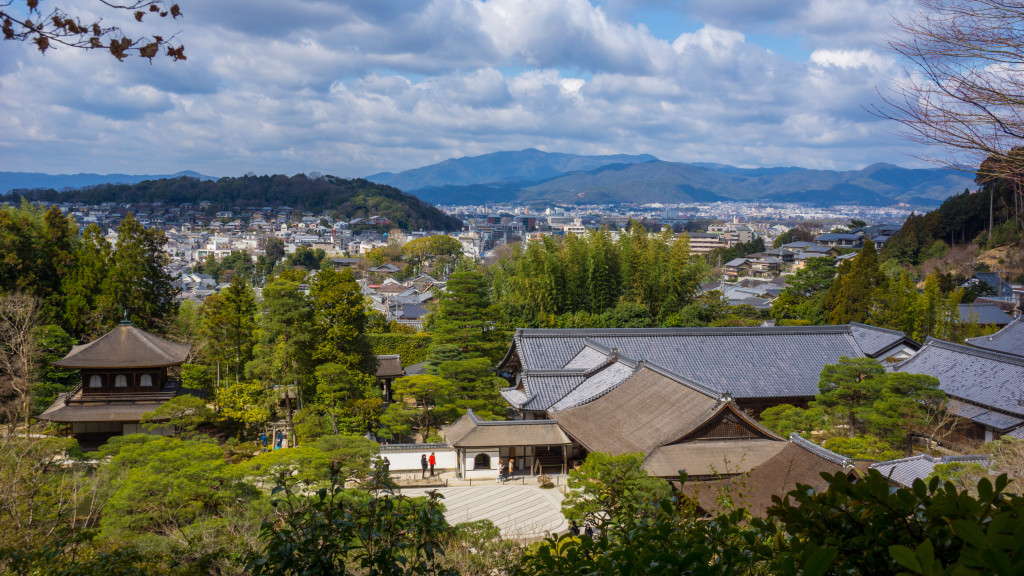
view from above the Ginkaku-ji temple complex with Kyoto city spread out below
Afterwards, we walked north on the Philosopher’s Path (哲学の道, Tetsugaku no michi) named after the 20th century philosopher Nishida Kitaro. This beautiful stone path follows a cherry blossom lined canal and is an attraction in itself. The best time to visit is Spring when the trees are in bloom.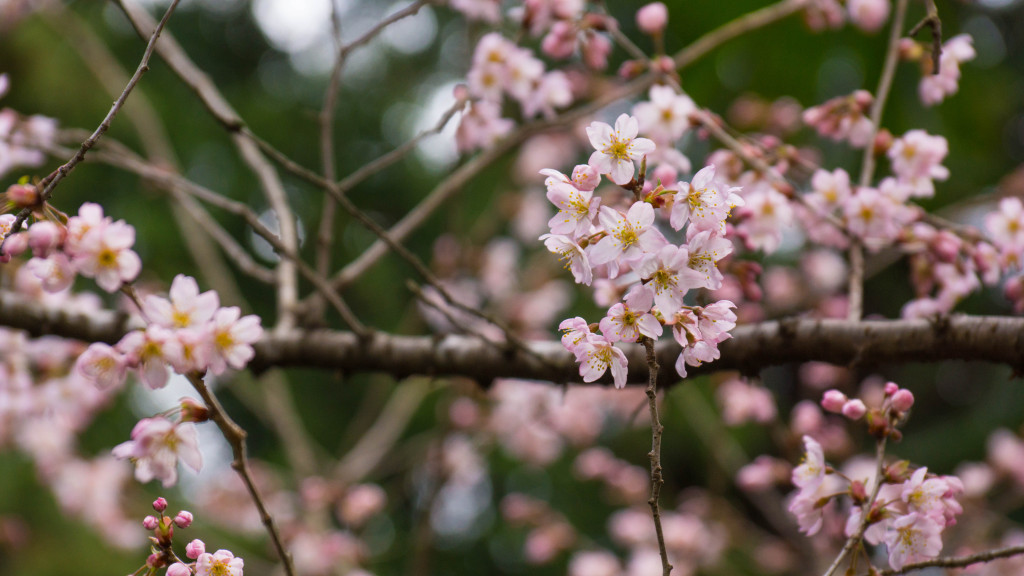 The path stretches between Ginkakuji and Nanzenji. Along the path you’ll find signs guiding you to other temples, such as Honen-in, my favorite temple of the trip!
The path stretches between Ginkakuji and Nanzenji. Along the path you’ll find signs guiding you to other temples, such as Honen-in, my favorite temple of the trip!
Honen-in Temple is very different from Ginkaku-ji, it felt secluded, in fact we had the place nearly to ourselves. This temple has a feeling of community and warmth, I could tell it is used and loved daily by the neighborhood.
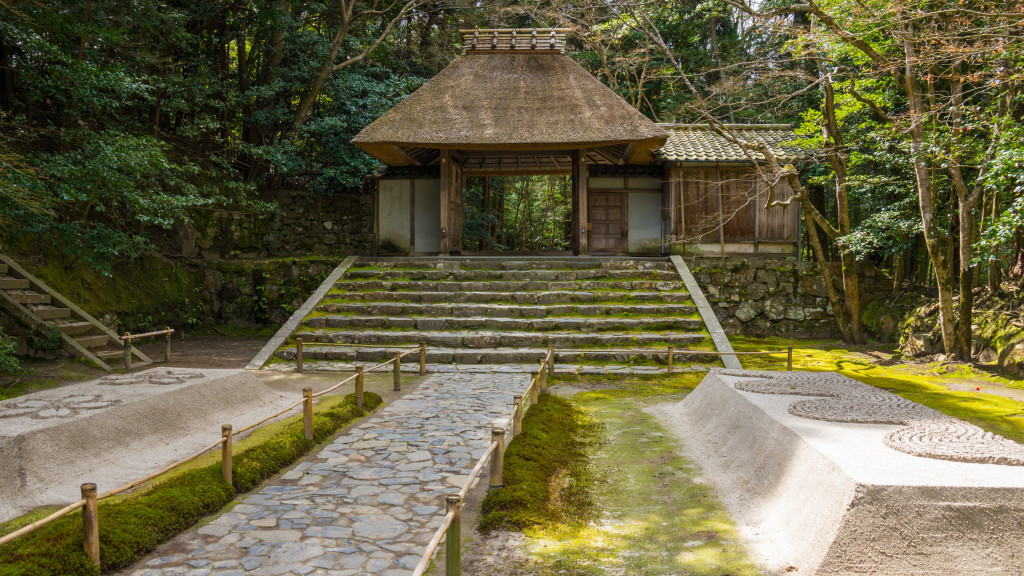
Honen-in entrance, view from inside the gate including two white sand mounds said to purify passers through
The thatched gate is surrounded by thick forest and moss. Steps lead down down into the temple grounds and visitors pass through two large white sand mounds. These mounds are said to purify whomever passes between them.
The grounds are quiet and shaded by tall trees, the gardens are simple but elegant. The din of the busy Higashiyama district is washed away by the slow trickle of water from fountains and bird song.
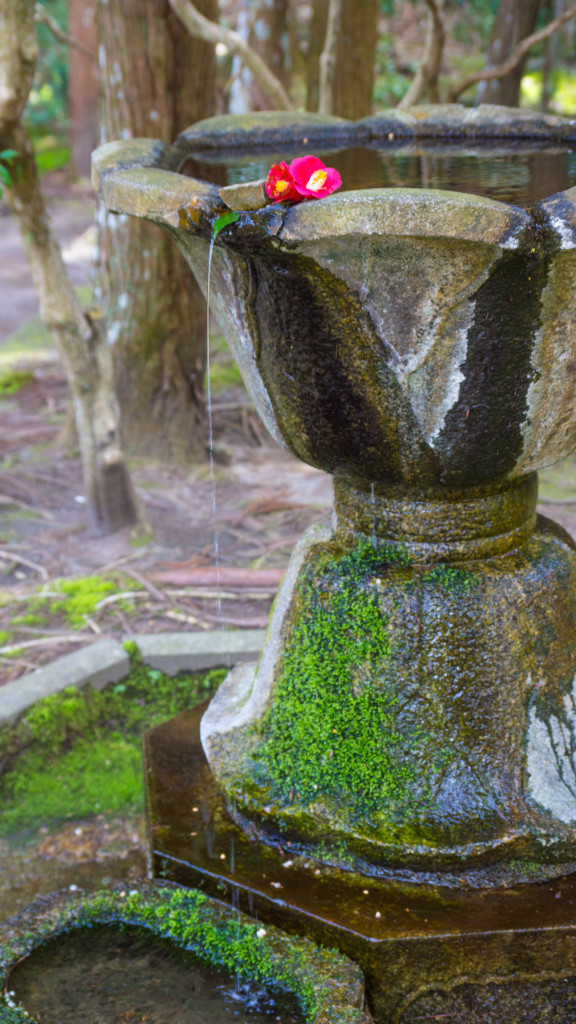
There is a pagoda that bears a plaque in the mossy ground with the characters for ‘Listen, Think, Accept, Practice, Believe.’ Every corner of this small temple complex seems to be imbued with heartfelt meaning and intention.
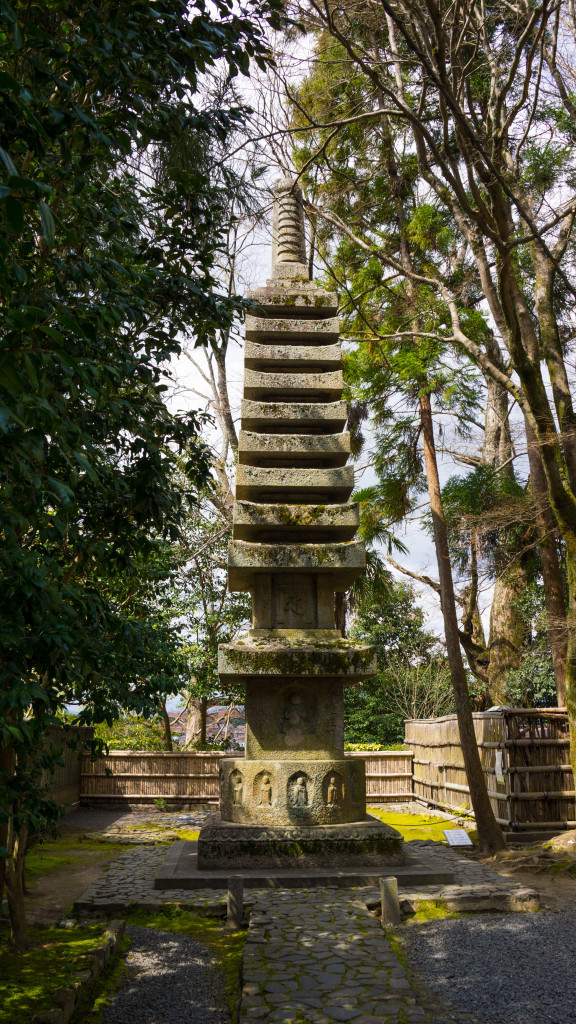
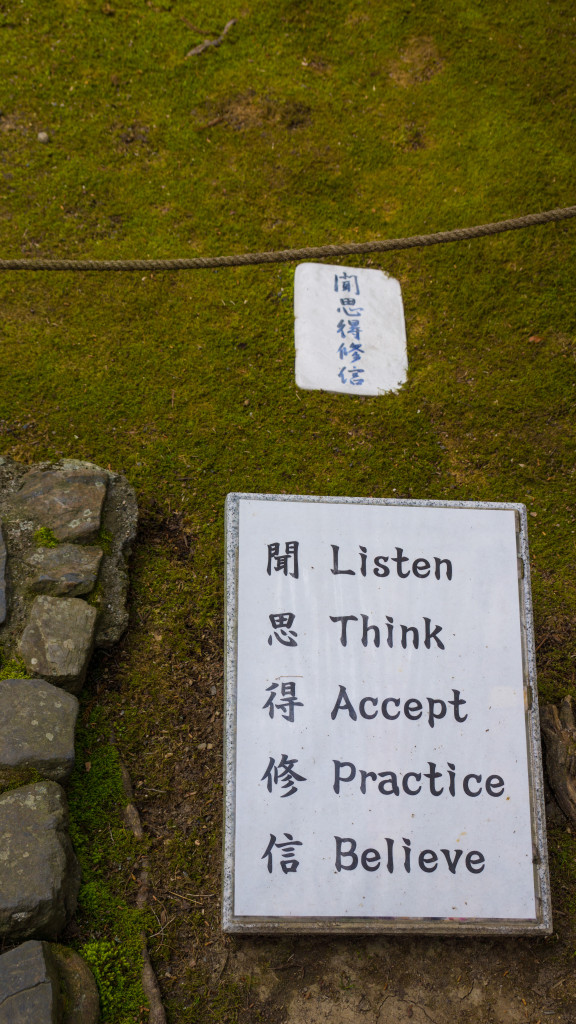
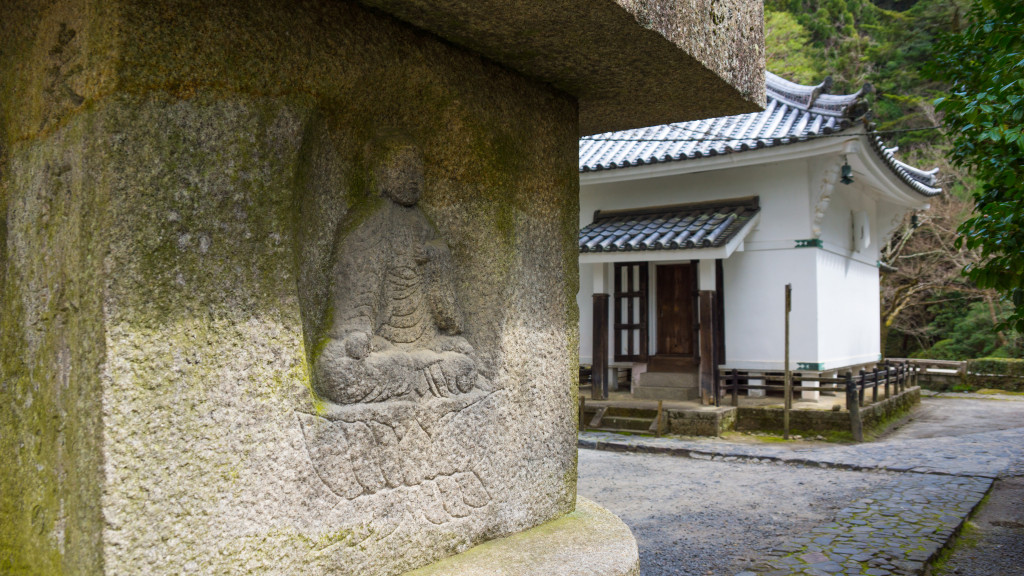
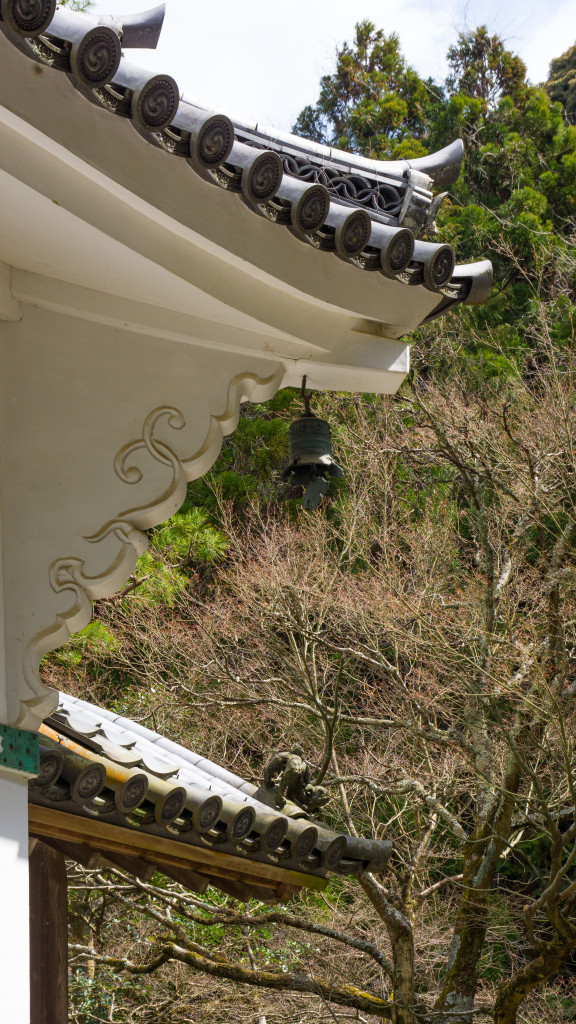
Behind the main hall is a stone path leading to an alcove carved out of the mountainside. Here is a full-sized Amida Buddha statue in bronze.
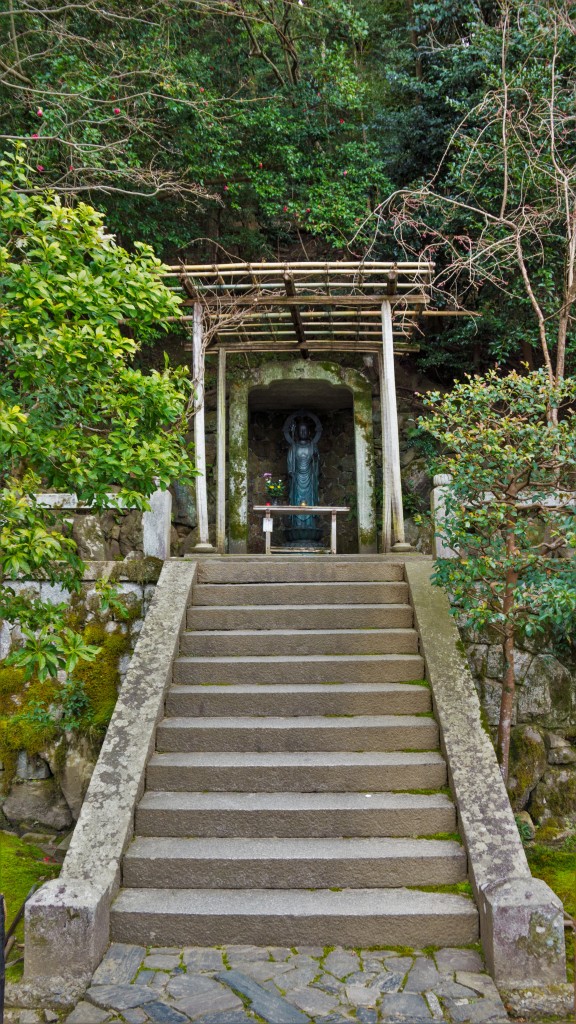
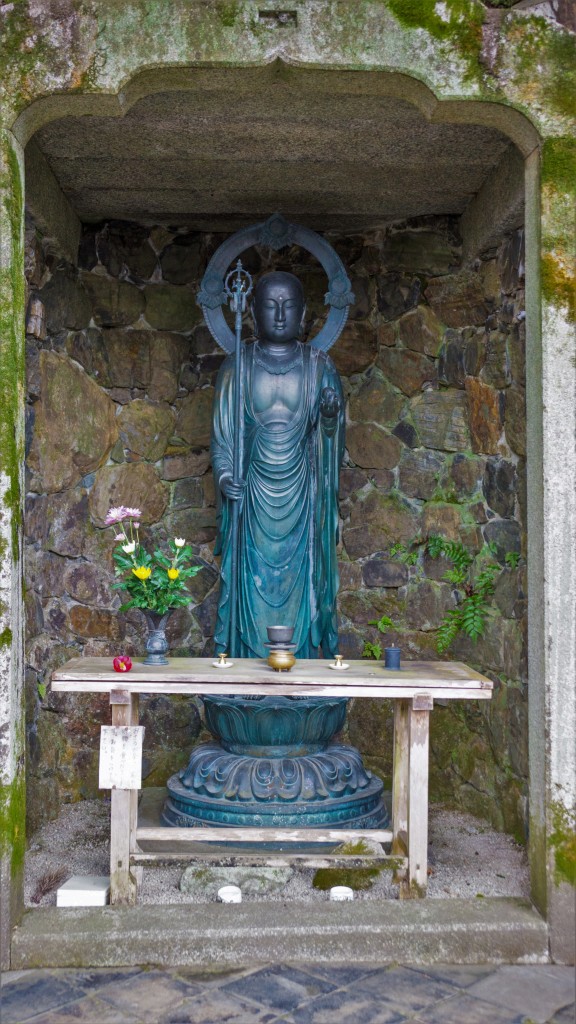
Leaving the temple we almost missed an annex building near the front gate until we saw a small sign that said ‘art gallery.’
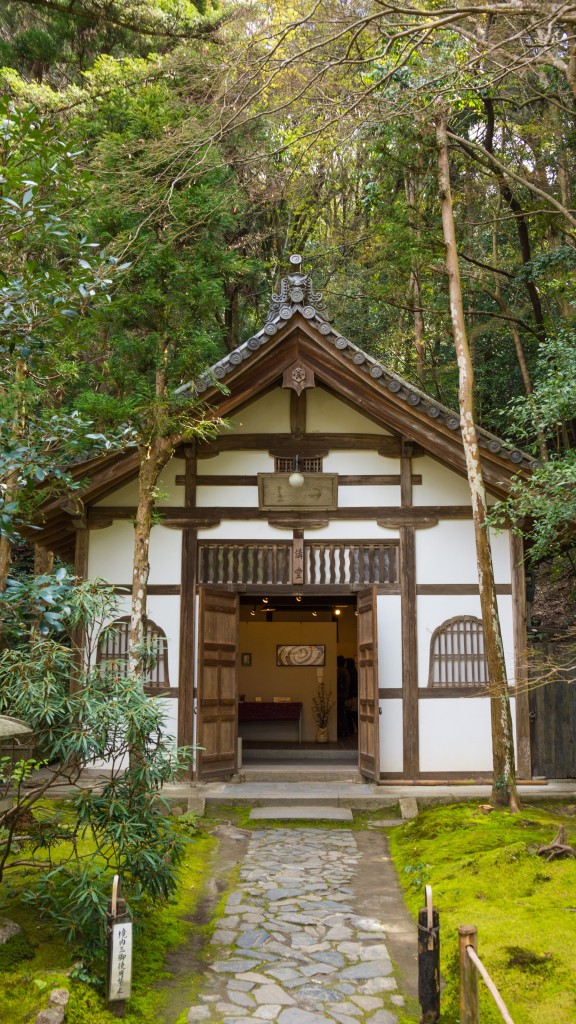
Sometimes you’re just in the right place at the right time! As I slowly examined each colorful handdrawn print and accompanying poetry (written in Japanese and English no less!) I thought ‘I wish I could take these all home’ but figured that was impossible.
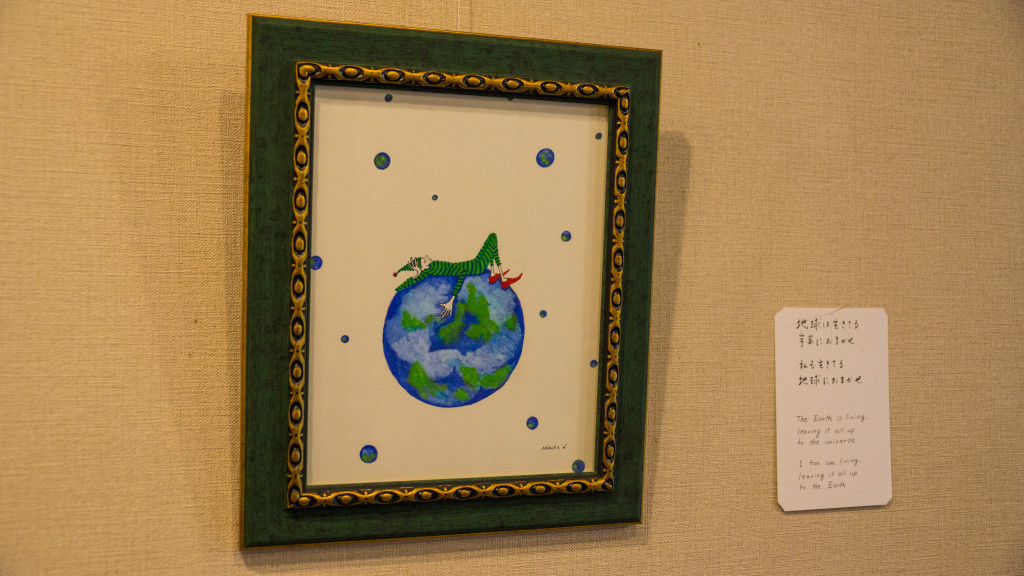
Art & Poetry Exhibit by Nobuko Willis
Then the artist stepped out from an adjoining room and greeted us. I told her how much I loved her artwork and especially the warmhearted poems. She said that her art & poetry were available in her book! I had to have one for my own and convinced her to sign my copy. Spinning Dreams is a beautiful book of art & poetry by Nobuko Willis.
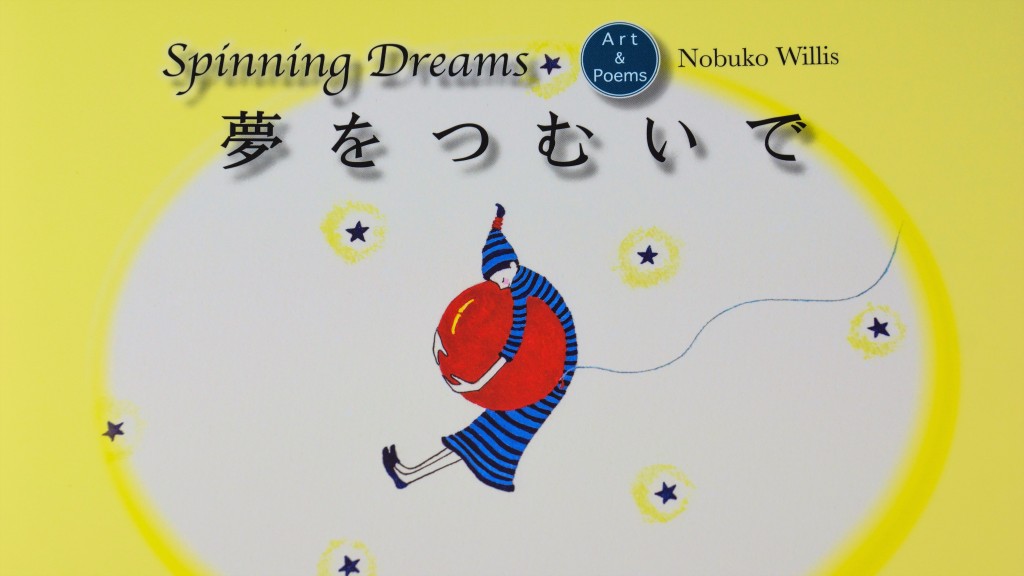
‘Spinning Dreams’ Art & Poetry Book by Nobuko Willis
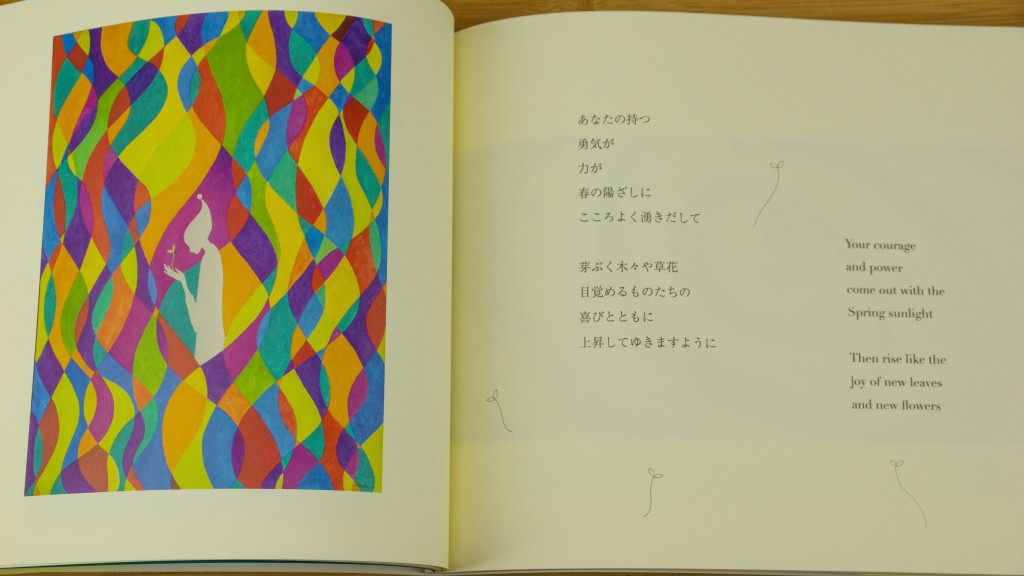 Out of everything I saw and bought on my trip, this is my favorite souvenir, a true keepsake.
Out of everything I saw and bought on my trip, this is my favorite souvenir, a true keepsake.
If you’d like to get a copy for yourself, please mail a letter to Nobuko Willis with the book name ‘Spinning Dreams’, number of copies, your name, telephone number, email, and destination address. Her contact information I translated for you from the publisher’s website (in Japanese).
Nobuko Willis
2-4 Shūgakuin Tsuboechō
Sakyō-ku, Kyōto-shi, Kyōto-fu 606-8075
Japan
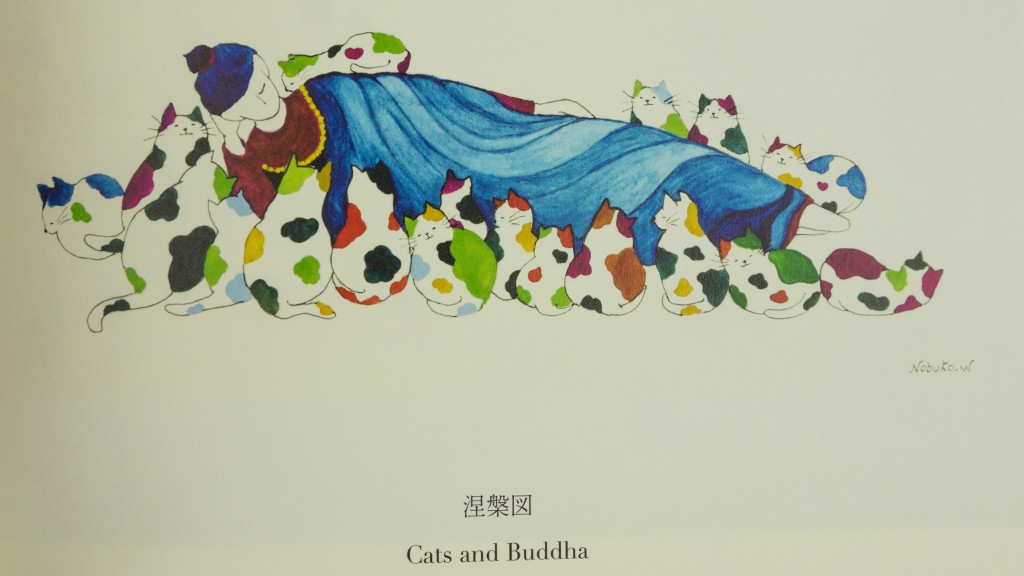
Leaving Honen-in through the purifying mounds of sands, I felt restored and knew I would return someday.
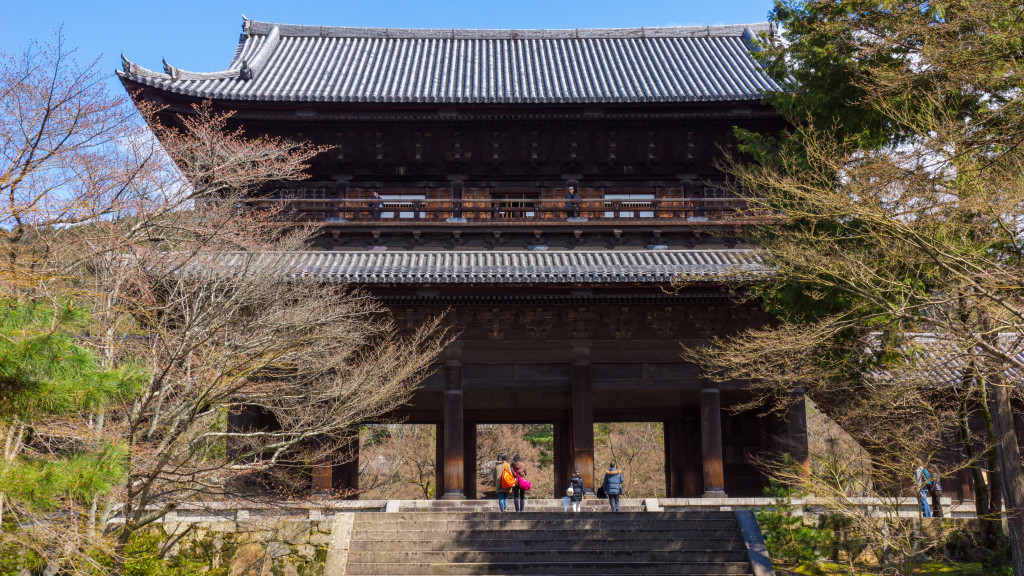
The sanmon (main gate) at Nanzen-ji
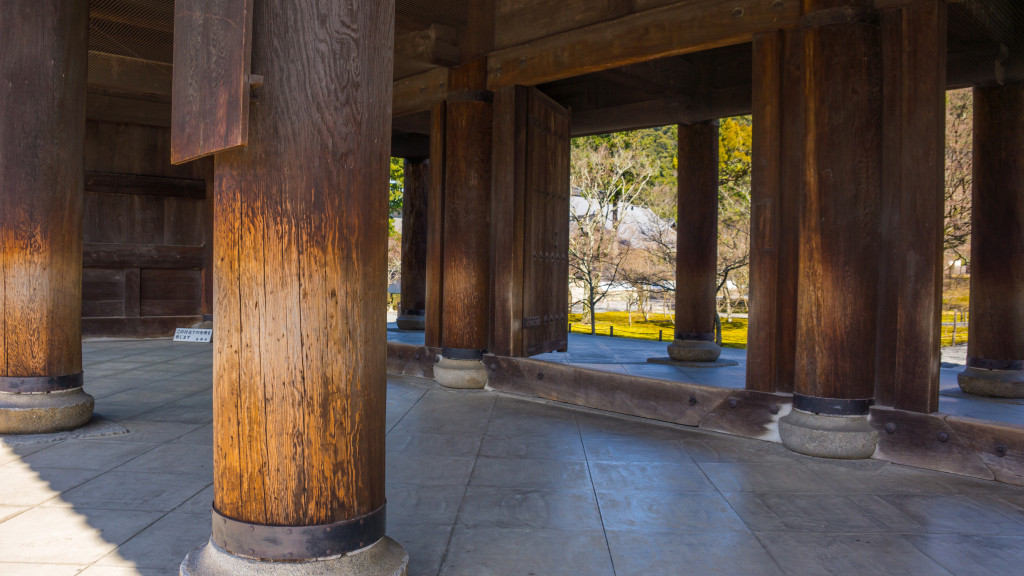
Inside the sanmon (main gate) at Nanzen-ji
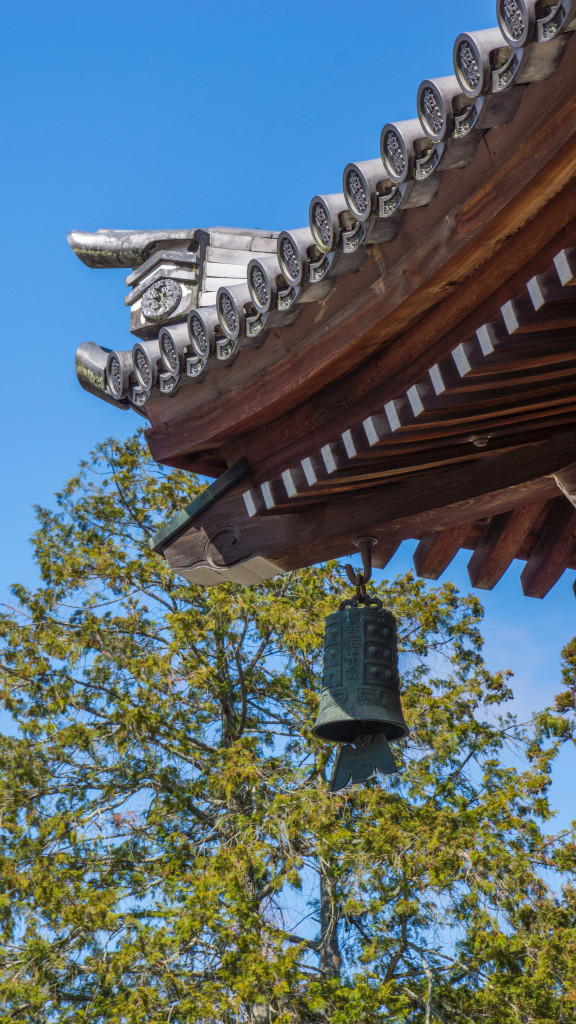
Roof eave of the sanmon (main gate)
The Philosopher’s Path ends at Nanzen-ji (南禅寺 South Zen Temple) which is famous for a beautiful red brick aqueduct, still in use today. Gorgeous and unique in it’s architecture, we walked among it’s repeating columns and then took the steps upstairs for a view from the top of the running waterway.
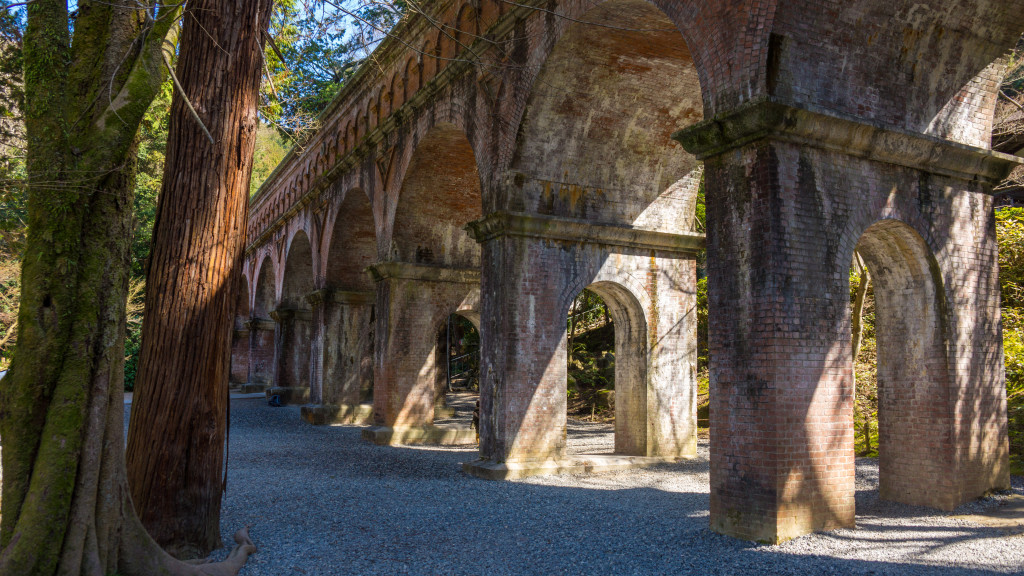
famous aqueduct at Nanzen-ji
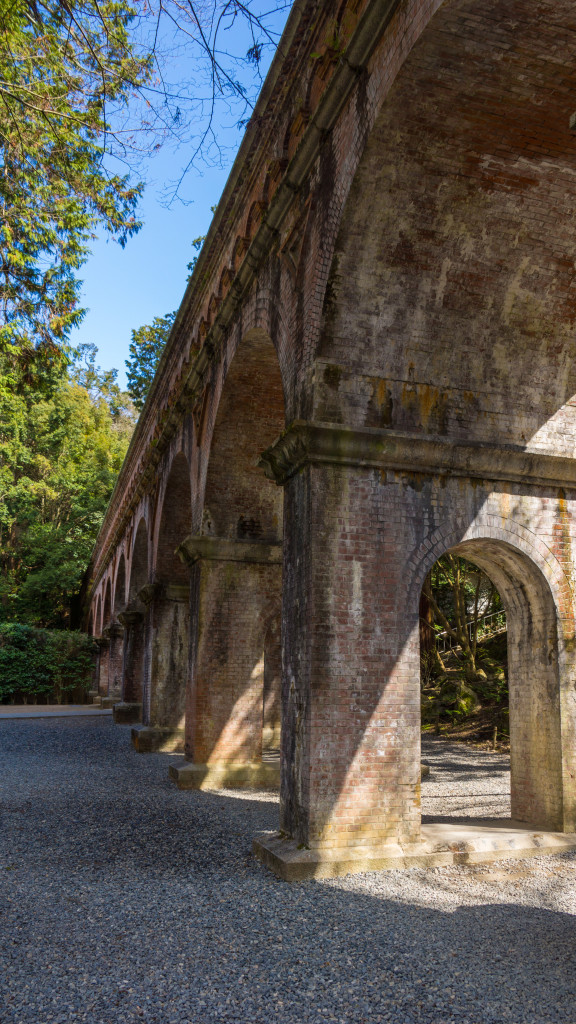
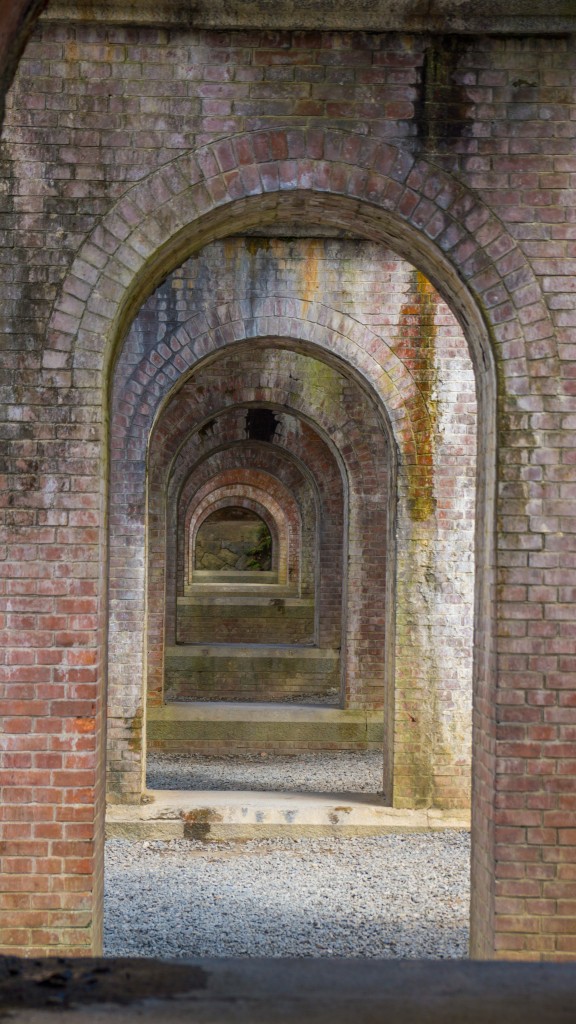
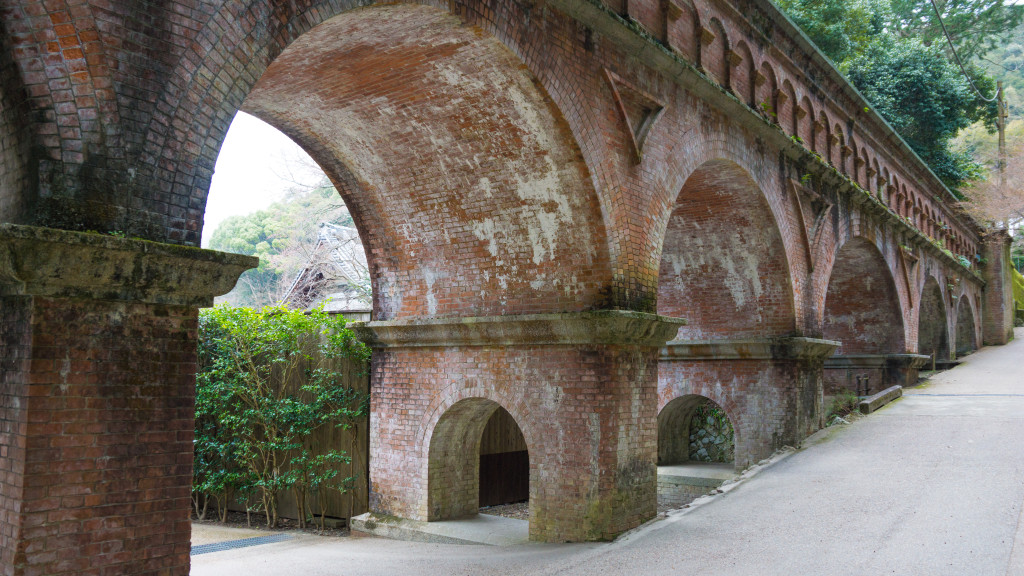
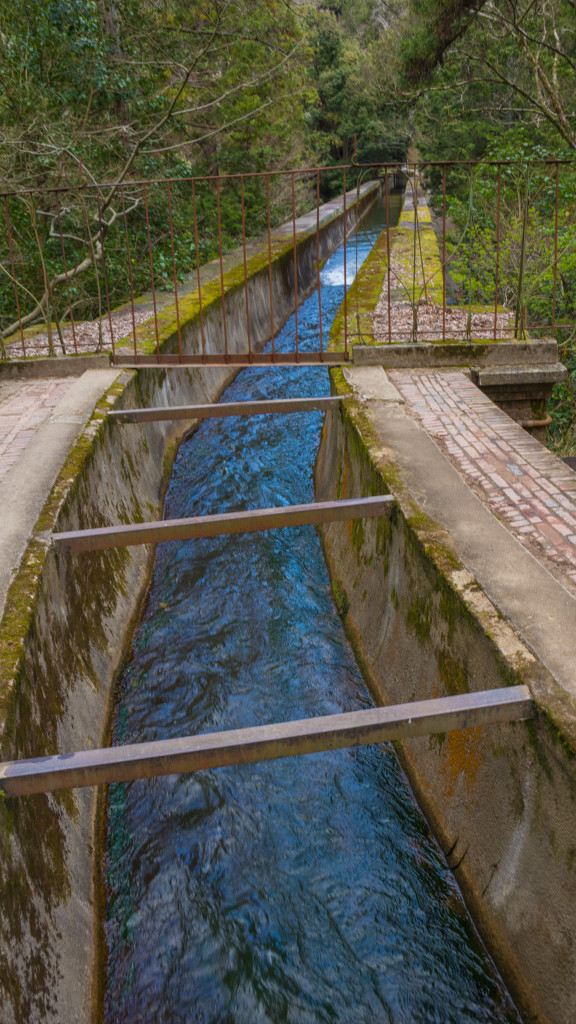
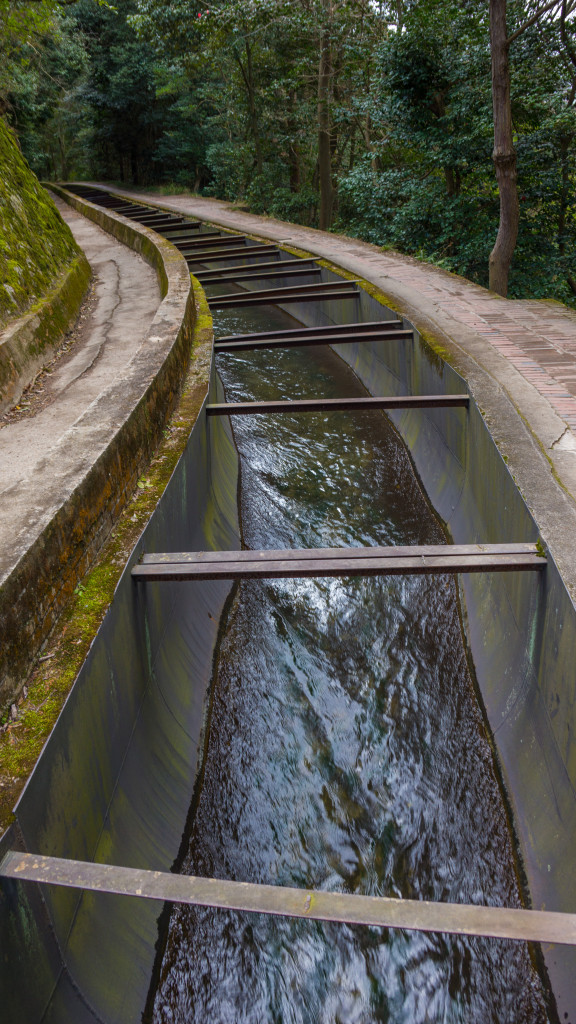
If you hung with me this far, congratulations! What a long post…there were just too many wonderful moments to share! Which part was your favorite? Do you love udon noodles too?
[…] Philosopher’s Path […]